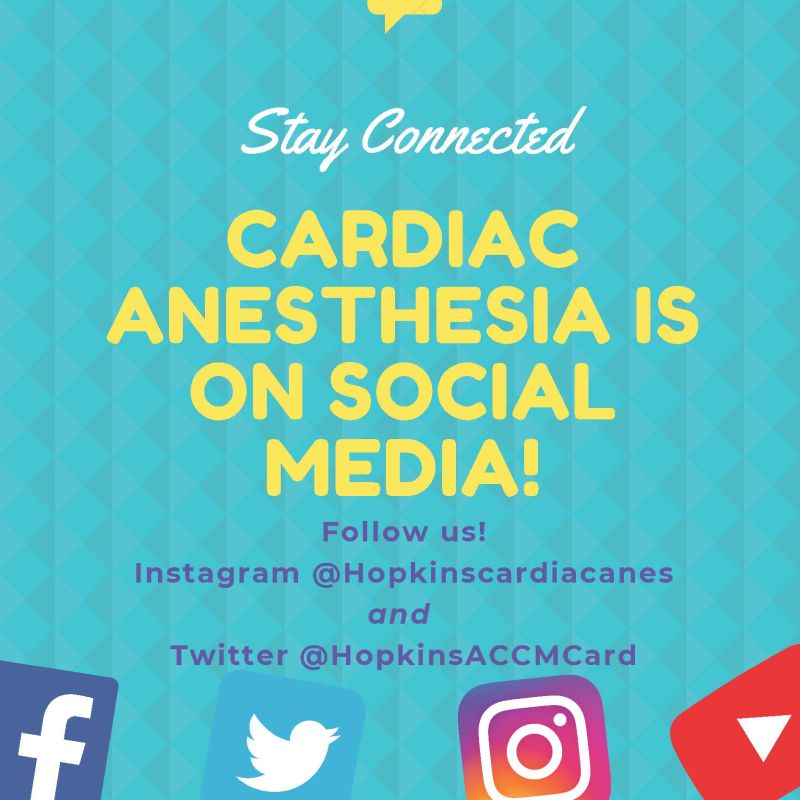Our Mission
The mission of Hopkins Medicine is excellence in research, education and clinical care. The cardiac anesthesia division has years of success in all 3 categories.
Cardiac surgery and procedures can be complex, invasive, and be accompanied by a great deal of patient and family anxiety. The Cardiac Anesthesia Division at Johns Hopkins represents and practices alongside world renowned cardiac care providers to instill comfort and confidence for patients and families receiving cardiac care. Procedures for cardiac patients are done in some of the most technically sophisticated operating suites in the world. Each cardiac operating suite contains state of the art monitoring equipment including TEE machines with 3D capability to promote the highest quality and safe patient care for each surgical procedure. This care continues during the postoperative period in the critical care suite. Additionally, the Cardiac Anesthesia Division collaborates with the Cardiac Electrophysiology group to support all diagnostic and intervention procedures in the EP procedural suites. Also, Cardiac anesthesia exclusively provides real-time interventional echocardiography guidance for structural heart procedures including percutaneous mitral, aortic and tricuspid valve repair/replacements – as well as for left atrial appendage procedures. Faculty are recognized experts in echocardiography, including 3D echocardiography and interventional echocardiography.
Our Faculty
The Cardiac Division’s faculty are heavily involved in research, addressing fundamental questions of discovery in both basic science and in the clinical domain. With approximately $2 million in annual extramural funding, patients and their families can feel confident in their providers’ techniques and expertise while receiving general anesthesia and continuous vital monitoring in the operating rooms.
The cardiac anesthesia faculty are incredibly involved in education on a local as well as international level. Faculty consistently speak at national and international conferences as well as hold leadership positions in orchestrating these conferences.
Spotlight: Dr. Chelsey Santino, MD
 Dr. Chelsey Santino joined the Department of Anesthesiology and Critical Care Medicine in August 2025. Originally from Arizona, she completed medical school at the University of Arizona College of Medicine-Tucson. She then went on to complete residency in Anesthesiology, followed by dual fellowships in Adult Cardiothoracic Anesthesiology and Adult Critical Care Medicine, all at Johns Hopkins. She is excited to have the opportunity to join the Division of Cardiac Anesthesia as full-time faculty, where she will split her clinical time between the CVSICU and the cardiac ORs. She has academic interests in resident and fellow education and ultrasonography (POCUS and TEE).
When not in the hospital, Dr. Santino can usually be found at the barn with her horse, Durango, or spending time with her husband, Michael.
Dr. Chelsey Santino joined the Department of Anesthesiology and Critical Care Medicine in August 2025. Originally from Arizona, she completed medical school at the University of Arizona College of Medicine-Tucson. She then went on to complete residency in Anesthesiology, followed by dual fellowships in Adult Cardiothoracic Anesthesiology and Adult Critical Care Medicine, all at Johns Hopkins. She is excited to have the opportunity to join the Division of Cardiac Anesthesia as full-time faculty, where she will split her clinical time between the CVSICU and the cardiac ORs. She has academic interests in resident and fellow education and ultrasonography (POCUS and TEE).
When not in the hospital, Dr. Santino can usually be found at the barn with her horse, Durango, or spending time with her husband, Michael. Spotlight: Dr. Tymoteusz “Tym” Kajstura, MD
 Dr. Tymoteusz “Tym” Kajstura, MD, PhD joined the Cardiac Division of the Anesthesiology and Critical Care Department in August 2025. He has completed medical school, a PhD in neuroscience, residency in Anesthesiology and Critical Care Medicine – where he was a chief resident – and a fellowship in Adult Cardiothoracic Anesthesiology, all at the Johns Hopkins School of Medicine. He is thrilled to be staying on as full-time faculty. His clinical effort will be split between the Cardiac Division, the Adult Multispecialty Division, and the liver transplantation team. He is interested in transesophageal echocardiography education as well as intra-operative management of solid organ transplantation.
Dr. Tymoteusz “Tym” Kajstura, MD, PhD joined the Cardiac Division of the Anesthesiology and Critical Care Department in August 2025. He has completed medical school, a PhD in neuroscience, residency in Anesthesiology and Critical Care Medicine – where he was a chief resident – and a fellowship in Adult Cardiothoracic Anesthesiology, all at the Johns Hopkins School of Medicine. He is thrilled to be staying on as full-time faculty. His clinical effort will be split between the Cardiac Division, the Adult Multispecialty Division, and the liver transplantation team. He is interested in transesophageal echocardiography education as well as intra-operative management of solid organ transplantation.
Dr. Kajstura was born in Krakow, Poland, but is a proud and grateful to be a Baltimore, MD transplant. He and his wife, Ellen, live in the city with their two children. He is an avid runner and budding cyclist, and always up for a run or a ride – the longer, the better.
Social Media

Electrophysiology (EP) Cohort
CRNAs in the EP cohort are expert in providing anesthesia to cardiac patients undergoing minimally invasive procedures such as radiofrequency ablation (RFA) of dysrhythmias, implantation and removal of pacemakers and defibrillators, device lead removal/revision, implantation of pulmonic valves, the Lariat procedure, electrophysiological studies, cardioversion, and transesophageal echocardiograms. The EP cohort currently has 28 CRNAs. This cohort is under the cardiac anesthesia division and has an excellent collaborative practice with the cardiac anesthesiologists.